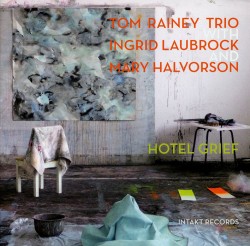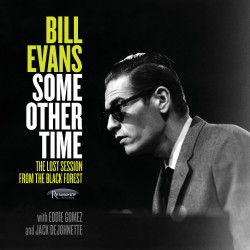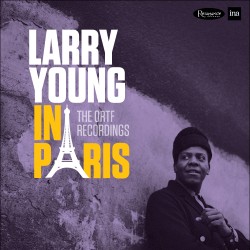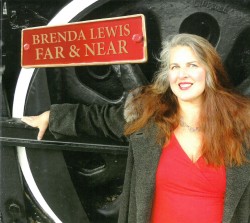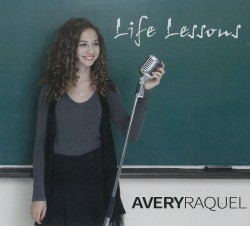Those Who Teach Can Also Play
As shibboleths go, the hoary “those who can do, those who can’t teach,” must rank at the very top of the list. Besides libelling the majority of educators who devote themselves to the task of imparting knowledge to students, it negates the activities of those who teach and do. Here are some musicians who maintain a full-time teaching career along with consistent gigging.
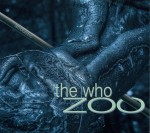 Case in point is American drummer Gerry Hemingway, now on the faculty of the Hochschule Luzern in Switzerland. This commitment doesn’t stop him from being part of many working bands. One is The Who trio, filled out by pianist/synthesizer player Michel Wintsch and bassist Bänz Oester, both Swiss natives. Zoo (Auricle Aur 14+15; gerryhemingway.com/auricle) is one all-acoustic CD and another featuring Wintsch on keyboards, each of which demonstrates the drummer’s sensitivity. On some of the electronic tracks his percussion colouration is such that its unobtrusiveness is reminiscent of the drum pulses in the film Birdman. Hemingway is a full partner on these discs however. On Sloeper for instance, which could define the acoustic jazz trio, he relaxes into poised and positioned accents which chime clockwork-like alongside Oester’s juiced-up thwacks, allowing Wintsch to extend the line. Subsequent nimble piano inventions are met with Gatling gun-like swats from the drummer until the exposition reverts to simple swing. Hemingway’s unfussy paddling keeps the exposition flowing even when the pianist unleashes evocatively flowery chords. Introduced by arpeggiated double-bass string shaking, Raccitus confirms that hard back beats and cymbal clangs can manoeuvre a gentle melody into a dramatic narrative of resonating strength. With capricious echoes and processing from the synthesizer adding unforeseen granular synthesis and oscillated wiggles to the program, the percussionist adopts cutting-edge techniques. On the extended Lamp Bowl for example, dealing with timbres that could come from Hammond organ, murmuring computer programs or signals from outer space, Hemingway’s polyrhythms break up the narrative at the same time as they steady the beat. Considering Wintsch’s playing is equally protean, highlighting both vivid acoustic melodies and buzzing electric oscillations, the drummer’s rugged pops plus staccato interjections from the bassist further ground the piece. Hemingway’s artful shadings in both settings confirm why the professional development days on his teaching calendar are marked by playing opportunities with ensembles of various sizes.
Case in point is American drummer Gerry Hemingway, now on the faculty of the Hochschule Luzern in Switzerland. This commitment doesn’t stop him from being part of many working bands. One is The Who trio, filled out by pianist/synthesizer player Michel Wintsch and bassist Bänz Oester, both Swiss natives. Zoo (Auricle Aur 14+15; gerryhemingway.com/auricle) is one all-acoustic CD and another featuring Wintsch on keyboards, each of which demonstrates the drummer’s sensitivity. On some of the electronic tracks his percussion colouration is such that its unobtrusiveness is reminiscent of the drum pulses in the film Birdman. Hemingway is a full partner on these discs however. On Sloeper for instance, which could define the acoustic jazz trio, he relaxes into poised and positioned accents which chime clockwork-like alongside Oester’s juiced-up thwacks, allowing Wintsch to extend the line. Subsequent nimble piano inventions are met with Gatling gun-like swats from the drummer until the exposition reverts to simple swing. Hemingway’s unfussy paddling keeps the exposition flowing even when the pianist unleashes evocatively flowery chords. Introduced by arpeggiated double-bass string shaking, Raccitus confirms that hard back beats and cymbal clangs can manoeuvre a gentle melody into a dramatic narrative of resonating strength. With capricious echoes and processing from the synthesizer adding unforeseen granular synthesis and oscillated wiggles to the program, the percussionist adopts cutting-edge techniques. On the extended Lamp Bowl for example, dealing with timbres that could come from Hammond organ, murmuring computer programs or signals from outer space, Hemingway’s polyrhythms break up the narrative at the same time as they steady the beat. Considering Wintsch’s playing is equally protean, highlighting both vivid acoustic melodies and buzzing electric oscillations, the drummer’s rugged pops plus staccato interjections from the bassist further ground the piece. Hemingway’s artful shadings in both settings confirm why the professional development days on his teaching calendar are marked by playing opportunities with ensembles of various sizes.
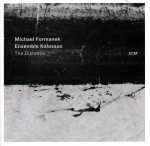 Size is no hindrance for bassist Michael Formanek, who teaches at Baltimore’s Peabody Institute. The 71-minute, multi-sectional The Distance suite he composed is performed with élan and ebullience by the specially organized 19-member Ensemble Kolossus (ECM 2484 ecmrecords.com). Notable for more than its enormity, the effect of listening to the CD’s ten tracks is like standing in front of a large painting of an important 19th-century battle. While the canvas initially draws you to the conflict in the foreground, very soon you begin noticing the details on the scene’s periphery. It’s the same with Exoskeleton, the CD’s eight-part centrepiece. Introduced by the bassist’s own pedal-to-the-metal string pumping, the work quickly settles into sequences that alternate vamping section work with solo expression. With five reed and eight brass players, the undulating horn crescendos often put into bolder relief, or are put into bolder relief by, the sophisticated musings issuing from Kris Davis’ linear piano lines or guitarist Mary Halvorson’s darkened finger picking. This means that despite huffing theme variations by the four trombonists in the early sequences, a finger-snapping rhythm remains. Subsequent tonal deconstruction in the form of a duet between tenor saxophonist Chris Speed and cornetist Kurt Knuffke, or trumpeter Ralph Alessi’s tongue flutters contrasting with trombonist Alan Ferber’s more moderated blasts, are kept in check by Formanek’s strong arrangements. Not only does the layered note colouration flow around the soloists, but acting like a drill sergeant, the guitarist’s hammered notes never allow the sound excursions to travel off into uncharted musical paths. All this doesn’t weaken the compositional thrust in any way and by the penultimate section, A Reptile Dysfunction, concentrated polyphony generated by growling horns plus thick smacks from the bassist and drummer Tomas Fujiwara give way to a polished chamber-like duet. Oscar Noriega’s contralto clarinet tones brushing up against Patricia Brennan’s chiming marimba reveals one more painterly detail of the composition. Finally, Metamorphic, the climax, involves trumpeter Dave Ballou’s polished grace notes soaring like a dove of peace over vamping, bellicose multiphonics that involve every other player. Ballou’s brassy resolution helps direct the suite to wrap up with the same intensity with which it began. With detailing demanding repeated listening, Formanek’s creative triumph is confirmed.
Size is no hindrance for bassist Michael Formanek, who teaches at Baltimore’s Peabody Institute. The 71-minute, multi-sectional The Distance suite he composed is performed with élan and ebullience by the specially organized 19-member Ensemble Kolossus (ECM 2484 ecmrecords.com). Notable for more than its enormity, the effect of listening to the CD’s ten tracks is like standing in front of a large painting of an important 19th-century battle. While the canvas initially draws you to the conflict in the foreground, very soon you begin noticing the details on the scene’s periphery. It’s the same with Exoskeleton, the CD’s eight-part centrepiece. Introduced by the bassist’s own pedal-to-the-metal string pumping, the work quickly settles into sequences that alternate vamping section work with solo expression. With five reed and eight brass players, the undulating horn crescendos often put into bolder relief, or are put into bolder relief by, the sophisticated musings issuing from Kris Davis’ linear piano lines or guitarist Mary Halvorson’s darkened finger picking. This means that despite huffing theme variations by the four trombonists in the early sequences, a finger-snapping rhythm remains. Subsequent tonal deconstruction in the form of a duet between tenor saxophonist Chris Speed and cornetist Kurt Knuffke, or trumpeter Ralph Alessi’s tongue flutters contrasting with trombonist Alan Ferber’s more moderated blasts, are kept in check by Formanek’s strong arrangements. Not only does the layered note colouration flow around the soloists, but acting like a drill sergeant, the guitarist’s hammered notes never allow the sound excursions to travel off into uncharted musical paths. All this doesn’t weaken the compositional thrust in any way and by the penultimate section, A Reptile Dysfunction, concentrated polyphony generated by growling horns plus thick smacks from the bassist and drummer Tomas Fujiwara give way to a polished chamber-like duet. Oscar Noriega’s contralto clarinet tones brushing up against Patricia Brennan’s chiming marimba reveals one more painterly detail of the composition. Finally, Metamorphic, the climax, involves trumpeter Dave Ballou’s polished grace notes soaring like a dove of peace over vamping, bellicose multiphonics that involve every other player. Ballou’s brassy resolution helps direct the suite to wrap up with the same intensity with which it began. With detailing demanding repeated listening, Formanek’s creative triumph is confirmed.
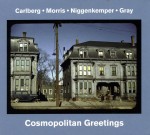 On a much smaller scale, but with the same sort of sonic concordance is Cosmopolitan Greetings (Red Piano RPR 4699-4419-2 redpianorecords.com), where a quartet featuring pianist Frank Carlberg, who teaches at Boston’s New England Conservatory, plays three of his originals and three free improvisations. Although not a regular group, there’s no fissure between the academic and the jobbing musicians: guitarist Joe Morris, bassist Pascal Niggenkemper and drummer Luther Gray. If anything, the pianist’s writing and versatility come across like line drawings which break a solid page of text in a publication. Thematic links to Thelonious Monk’s crooked time sense (especially on Now and Forever) and Herbie Nichols’ joyous abandon (more pointedly on Get it?), allow Carlberg to create a space where bop, cool and free impulses intersect. On the second tune for instance, the melody is paramount, with a drum solo offering a lesson in how to gradually minimize the tempo while maximizing swing. Elsewhere, as on the title tune, Niggenkemper’s string segmentation suggests minimalism, tempered with keyboard clip-clops; while walking and sliding bass stops plus ratcheting guitar licks turn Cadillac Squawk, another Carlberg line, into unexpectedly relaxed Third Stream-like music. Like a champion kayaker crewing on a larger boat, veteran free improviser Morris expresses himself with nuanced distinction within the group improv that’s Who Eats Who. As his guitar picking creates time dislocation alongside Gray’s clattering fills, the piece reaches its zenith as keyboard swabbing gives away to fluid squirms from Carlberg, making the finale as dramatic as it is didactic.
On a much smaller scale, but with the same sort of sonic concordance is Cosmopolitan Greetings (Red Piano RPR 4699-4419-2 redpianorecords.com), where a quartet featuring pianist Frank Carlberg, who teaches at Boston’s New England Conservatory, plays three of his originals and three free improvisations. Although not a regular group, there’s no fissure between the academic and the jobbing musicians: guitarist Joe Morris, bassist Pascal Niggenkemper and drummer Luther Gray. If anything, the pianist’s writing and versatility come across like line drawings which break a solid page of text in a publication. Thematic links to Thelonious Monk’s crooked time sense (especially on Now and Forever) and Herbie Nichols’ joyous abandon (more pointedly on Get it?), allow Carlberg to create a space where bop, cool and free impulses intersect. On the second tune for instance, the melody is paramount, with a drum solo offering a lesson in how to gradually minimize the tempo while maximizing swing. Elsewhere, as on the title tune, Niggenkemper’s string segmentation suggests minimalism, tempered with keyboard clip-clops; while walking and sliding bass stops plus ratcheting guitar licks turn Cadillac Squawk, another Carlberg line, into unexpectedly relaxed Third Stream-like music. Like a champion kayaker crewing on a larger boat, veteran free improviser Morris expresses himself with nuanced distinction within the group improv that’s Who Eats Who. As his guitar picking creates time dislocation alongside Gray’s clattering fills, the piece reaches its zenith as keyboard swabbing gives away to fluid squirms from Carlberg, making the finale as dramatic as it is didactic.
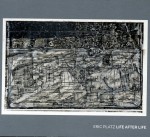 Piloting a mid-course between freedom and formalism are the seven compositions on Life After Life (Allos Documents 012 allosmusica.org), written and performed by percussionist Eric Platz. Platz, a music professor at Brandon University (BU) in Manitoba, is joined by cellist Leanne Zacharias who also teaches at BU, local electric bassist Don Benedictson, who recorded the disc, and Chicagoan James Falzone, who plays clarinet and adds a shruti box drone to some tracks. Three successive variants on the title track are chamber music-like duos, the last confirming the near-identical timbres of cello and clarinet; the first two demonstrating that Falzone and Platz can produce enlightened textures with the organization of synchronized swimmers plus the improvisational smarts that could imagine Jimmy Giuffre playing with Max Roach. Elsewhere, Zacharias, equally capable of plucking a swing line, emphasizes the innate woodiness of her instrument which joins with moderato clarinet tones and the timbered parts of Platz’s kit to form an appropriately tree-spanning confluence that delineates the composer’s mystical vision of Redwood Vesper. These inferences, plus sonic seasoning that bring in rock music-like rhythms via Platz’s back beat plus an exotic shruti box buzzing, are part of the CD’s 21-minute chef-d’oeuvre Blood Meridian. More closely related to the integration of separated impulses than blood, the sectional piece begins with droning undulations that sound electronic as well as acoustic, then introduce a rhythmic undertow that shares space with wheezing clarinet puffs, marimba pops and cello riffs. Like a radio shunting from one station to another, additional sequences include a duet with dreamy cello strokes and whimsical clarinet yelps; maracas shakes, bell pealing, wood-block echoes; and human-sounding panting and breathing. Ultimately the composition memorably resolves itself as the wave form oscillations cease and an overlay of clarinet trills signal a triumphant resolution. Conclusively, the drummer’s echoing pop puts an onomatopoeic period on the program.
Piloting a mid-course between freedom and formalism are the seven compositions on Life After Life (Allos Documents 012 allosmusica.org), written and performed by percussionist Eric Platz. Platz, a music professor at Brandon University (BU) in Manitoba, is joined by cellist Leanne Zacharias who also teaches at BU, local electric bassist Don Benedictson, who recorded the disc, and Chicagoan James Falzone, who plays clarinet and adds a shruti box drone to some tracks. Three successive variants on the title track are chamber music-like duos, the last confirming the near-identical timbres of cello and clarinet; the first two demonstrating that Falzone and Platz can produce enlightened textures with the organization of synchronized swimmers plus the improvisational smarts that could imagine Jimmy Giuffre playing with Max Roach. Elsewhere, Zacharias, equally capable of plucking a swing line, emphasizes the innate woodiness of her instrument which joins with moderato clarinet tones and the timbered parts of Platz’s kit to form an appropriately tree-spanning confluence that delineates the composer’s mystical vision of Redwood Vesper. These inferences, plus sonic seasoning that bring in rock music-like rhythms via Platz’s back beat plus an exotic shruti box buzzing, are part of the CD’s 21-minute chef-d’oeuvre Blood Meridian. More closely related to the integration of separated impulses than blood, the sectional piece begins with droning undulations that sound electronic as well as acoustic, then introduce a rhythmic undertow that shares space with wheezing clarinet puffs, marimba pops and cello riffs. Like a radio shunting from one station to another, additional sequences include a duet with dreamy cello strokes and whimsical clarinet yelps; maracas shakes, bell pealing, wood-block echoes; and human-sounding panting and breathing. Ultimately the composition memorably resolves itself as the wave form oscillations cease and an overlay of clarinet trills signal a triumphant resolution. Conclusively, the drummer’s echoing pop puts an onomatopoeic period on the program.
Review
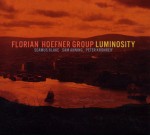 Musically, Luminosity (Origin Records 82706 originarts.com) may be the most straight ahead of the sessions here, but it’s also the one with the most varied cast. The program is eight compositions by German-born-and-raised pianist Florian Hoefner, who after a long period in New York, now teaches at Memorial University in St. John’s. The quartet is completed by American bassist Sam Anning, Austrian drummer Peter Kronreif and Vancouver-raised, Manhattan-based tenor and soprano saxophonist Seamus Blake. Obviously attracted to his new surroundings, Hoefner penned two fluid ballads The Narrows and North Country, which flow like the clear water in a Newfoundland harbour, and more obviously Newfound Jig. A frolicking piece that manages to bring in the tenth province’s old country musical history, Newfound Jig swings and swirls as Blake outputs John Coltrane-like slurs and slides and the pianist builds up intense modal chording. Ebullient, Blake adds the necessary crunch to the bossa-nova-like In Circles, working up a piston-driven head of steam without ever lapsing into screech mode. Dipping into the tenor’s lowest registers on Elements, Blake doubles the jazz-rock feel engendered by Kronreif’s scrambling thrusts. Overall though, Hoefner’s linear comping keeps the piece moving like a veteran sailor righting a scow in an ocean storm. Perhaps the key to the session is appropriately expressed on The Bottom Line. Pushed by tremolo piano chords and rattling drums, the melody expresses toughness without discontent. Those sentiments would seem to be the perfect way to adapt to the sometimes rugged life in Newfoundland – as well as describing the skills needed to be both a patient teacher and an innovating musician.
Musically, Luminosity (Origin Records 82706 originarts.com) may be the most straight ahead of the sessions here, but it’s also the one with the most varied cast. The program is eight compositions by German-born-and-raised pianist Florian Hoefner, who after a long period in New York, now teaches at Memorial University in St. John’s. The quartet is completed by American bassist Sam Anning, Austrian drummer Peter Kronreif and Vancouver-raised, Manhattan-based tenor and soprano saxophonist Seamus Blake. Obviously attracted to his new surroundings, Hoefner penned two fluid ballads The Narrows and North Country, which flow like the clear water in a Newfoundland harbour, and more obviously Newfound Jig. A frolicking piece that manages to bring in the tenth province’s old country musical history, Newfound Jig swings and swirls as Blake outputs John Coltrane-like slurs and slides and the pianist builds up intense modal chording. Ebullient, Blake adds the necessary crunch to the bossa-nova-like In Circles, working up a piston-driven head of steam without ever lapsing into screech mode. Dipping into the tenor’s lowest registers on Elements, Blake doubles the jazz-rock feel engendered by Kronreif’s scrambling thrusts. Overall though, Hoefner’s linear comping keeps the piece moving like a veteran sailor righting a scow in an ocean storm. Perhaps the key to the session is appropriately expressed on The Bottom Line. Pushed by tremolo piano chords and rattling drums, the melody expresses toughness without discontent. Those sentiments would seem to be the perfect way to adapt to the sometimes rugged life in Newfoundland – as well as describing the skills needed to be both a patient teacher and an innovating musician.
Listen
Luminosity
Newfound Jig
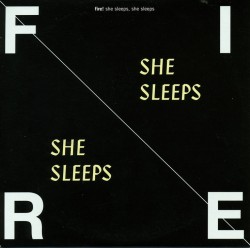 She Sleeps, She Sleeps
She Sleeps, She Sleeps

